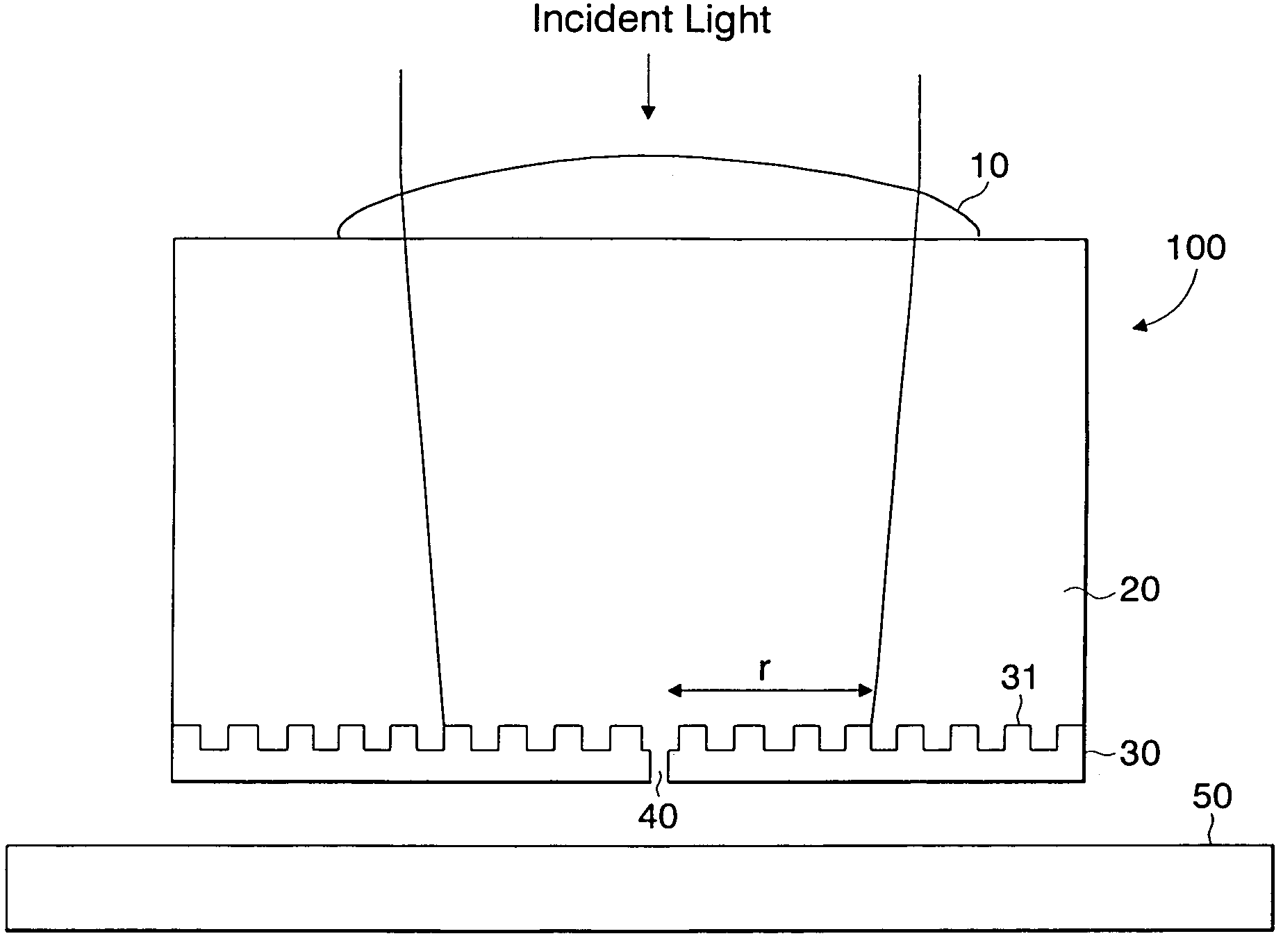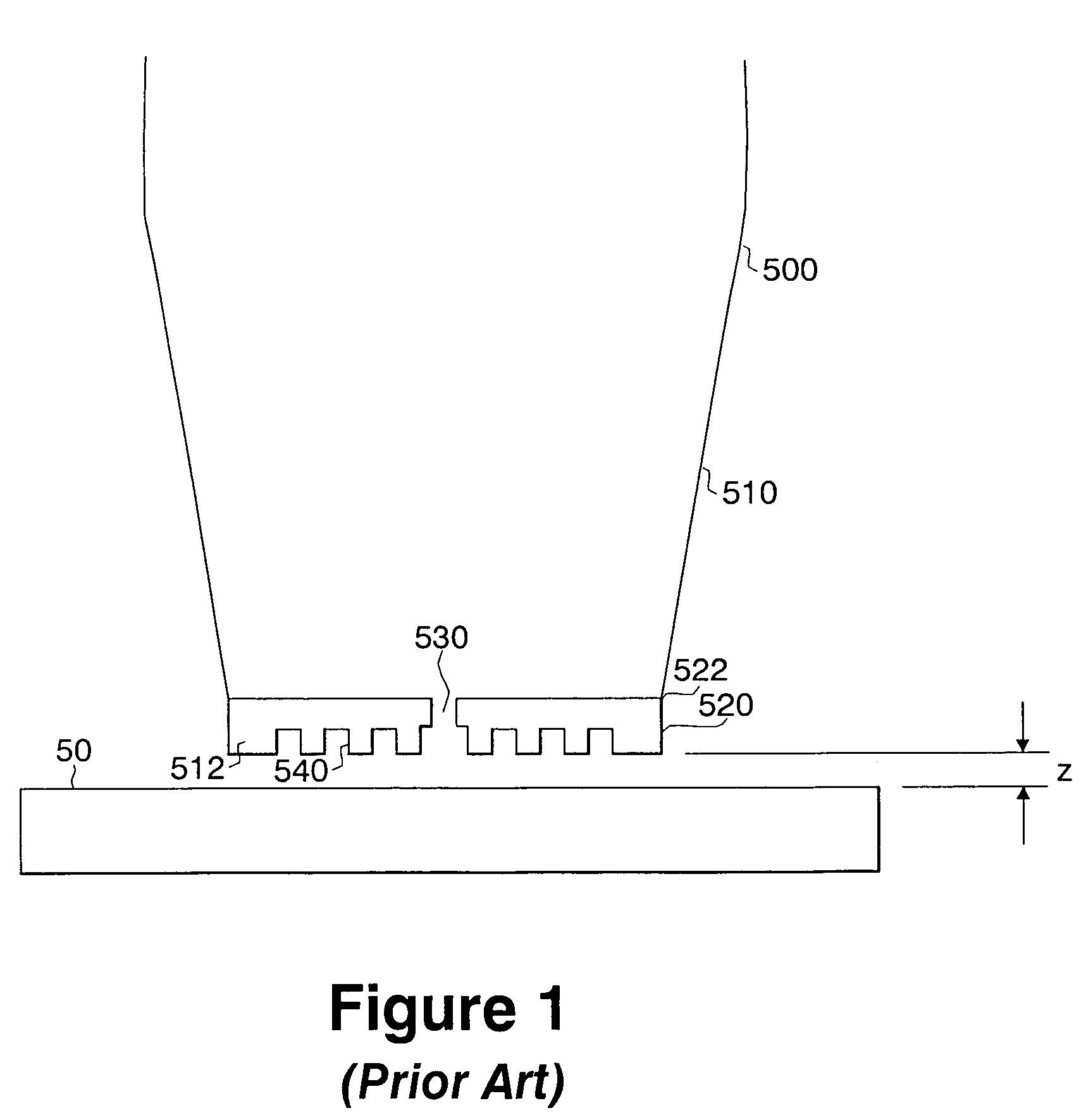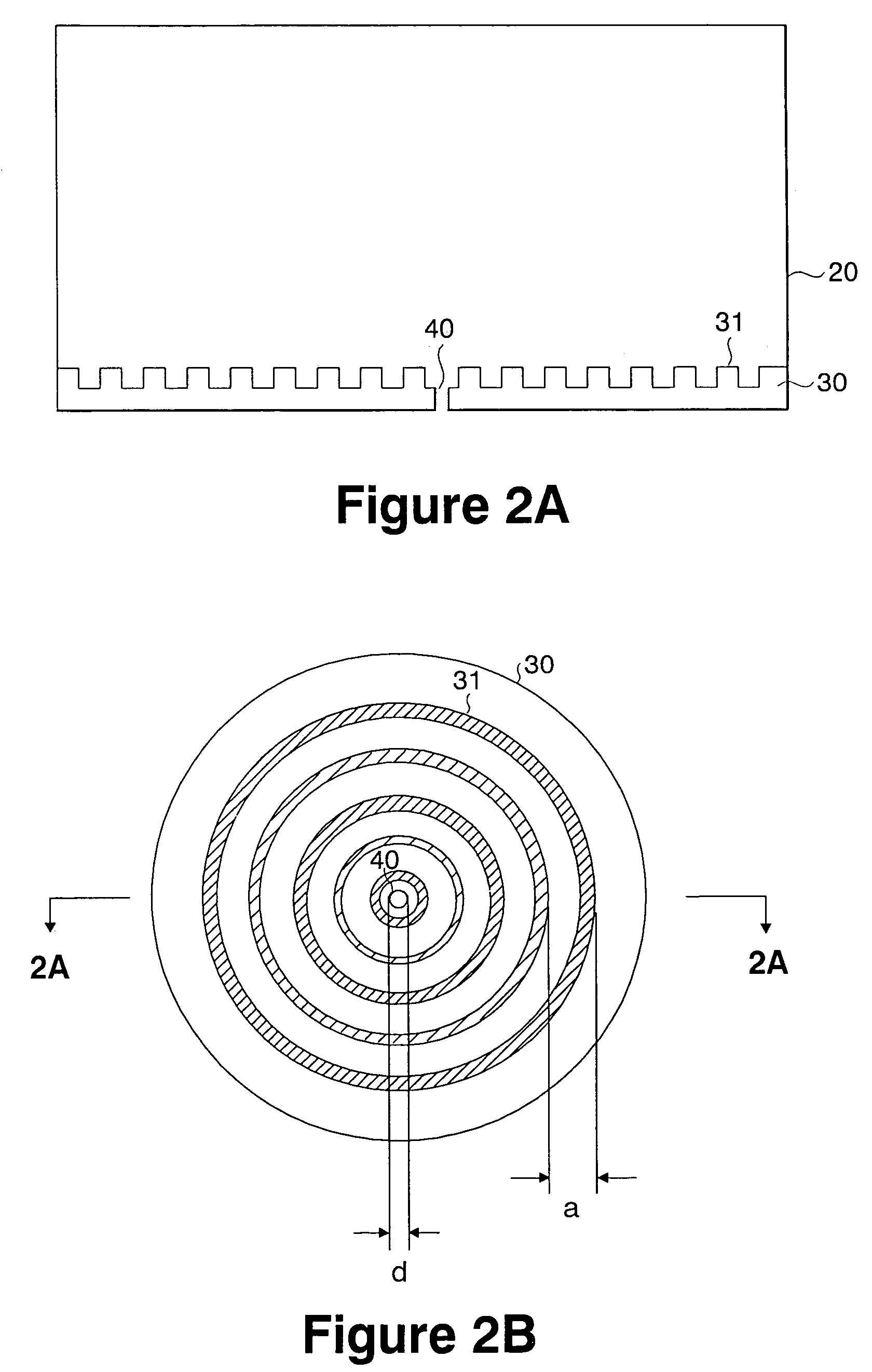Optical element for enhanced transmission of light and suppressed increase in temperature
a technology of optical elements and temperature reduction, applied in the field of optical elements, can solve the problems of reducing reliability, difficult to obtain a sufficient intensity of light required for writing data on the optical recording medium, etc., and achieve the effects of suppressing temperature increase, increasing power of light beams, and increasing power
- Summary
- Abstract
- Description
- Claims
- Application Information
AI Technical Summary
Benefits of technology
Problems solved by technology
Method used
Image
Examples
first embodiment
[0078]Referring to FIG. 6, an optical element 100 according to a first embodiment of the present invention is provided with a focus lens 10, an optical element body 20, and a conductive film 30. The optical element 100 is placed near an optical recording medium 50. The focus lens 10 is in contact with the optical element body 20 or may be separately provided. The optical element body 20 is made of transparent material such as optical glass or quartz.
[0079]The conductive film 30 is provided on an end surface of the optical element body 20, the end surface being placed near the optical recording medium 50. The conductive film 30 is made of metal such as silver or doped semiconductor and has an aperture 40 perforating through. The shape of the aperture is described in U.S. application Ser. No. 10 / 098,970, incorporated herein by reference. As described before, the exit size of the aperture 40 determines the resolution of an optical device. The diameter d of the aperture 40 is preferably...
second embodiment
[0089]Referring to FIG. 7, an optical element 100 according to a second embodiment of the present invention is provided with a focus lens 10, an optical element body 20, a high-refractive-index material film 60, and a conductive film 30. The optical element 100 is placed near an optical recording medium 50. The focus lens 10 is in contact with the optical element body 20 or may be separately provided. The optical element body 20 is made of transparent material such as optical glass or quartz.
[0090]The high-refractive-index material film 60 is provided on an end surface of the optical element body 20, the end surface being placed near the optical recording medium 50. The high-refractive-index material film 60 is made of a material having a refractive index higher than that of the optical element body 20, for example, a metal oxide such as titanium oxide or semiconductor such as silicon. Further, the conductive film 30 is deposited on the high-refractive-index material film 60. In ord...
third embodiment
[0098]Referring to FIG. 8, a third embodiment of the present invention is different from the second embodiment as shown in FIG. 7 in that the high-refractive-index material film 60 is provided on one surface of the conductive film 30, which faces the optical recording medium 50. Since materials and the main structure employed in the third embodiment are similar to those in the second embodiment, members similar to those described with reference to FIG. 7 are denoted by the same reference numerals and the details are omitted.
[0099]The high-refractive-index material film 60 may employ a multi-layer structure composed of two or more layers made of different materials.
[0100]It is possible to provide an interface layer between the high-refractive-index material film 60 and the conductive film 30 to achieve improved adhesion and reliability. In this case, it is preferable that the thickness of the interface layer is sufficiently smaller than the penetration depth of the surface plasmon fi...
PUM
| Property | Measurement | Unit |
|---|---|---|
| length | aaaaa | aaaaa |
| length | aaaaa | aaaaa |
| depth | aaaaa | aaaaa |
Abstract
Description
Claims
Application Information
 Login to View More
Login to View More - R&D
- Intellectual Property
- Life Sciences
- Materials
- Tech Scout
- Unparalleled Data Quality
- Higher Quality Content
- 60% Fewer Hallucinations
Browse by: Latest US Patents, China's latest patents, Technical Efficacy Thesaurus, Application Domain, Technology Topic, Popular Technical Reports.
© 2025 PatSnap. All rights reserved.Legal|Privacy policy|Modern Slavery Act Transparency Statement|Sitemap|About US| Contact US: help@patsnap.com



